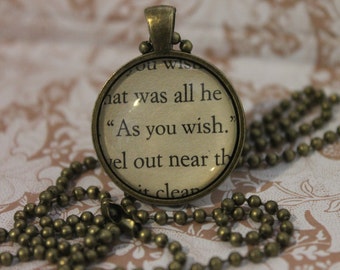

Today, we’re going to be taking a look at these traditional fantasy characters, starting, of course, with our Hero: Westley (Cary Elwes.) Instead of subverting these tropes or twisting them in some way, The Princess Bride embraces the simple ideas that these characters are founded upon, and proceeds to use the tropes as a playground, fully using the fantasy archetypes to craft a story that somehow manages to keep these ‘blank slate’ characters fresh, interesting, and unique, despite their clear fairy-tale blueprint. The Princess Bride seems to delight in its use of traditional fantasy archetypes: the damsel, the evil prince, the hero, the wizard, true love, etc. Ladyhawke told the story not as a fairy-tale, but as normal people trapped under a fairy-tale curse.Īt first glance, it seems like The Princess Bride didn’t do either, and instead, did what seems like one of the worst ideas: played it straight. The Wizard of Oz managed it by infusing a few twists, such as a protagonist from the ‘real world’. While not impossible, the fact is, it’s very tricky to make your characters true fantasy generic ‘archetypes’ and still create genuinely interesting characters. In most fairy tales, there really isn’t a lot of variety or development built into the characters involved, since the characters more or less exist to give the audience someone to root for, someone to root against, and, most importantly: to move the plot forward.

By focusing your emphasis on what the characters are doing, instead of who they are, you remove the main thrust of most stories: character growth, and turn it into something else: good vs. When the story you’re writing is focused less on the characters and more on the plot, you can run the risk of making your audience not care about the characters themselves. From a scriptwriting perspective, or indeed, a writing perspective in general, this is a terrible idea. In most legends and fairy tales, characters aren’t really people, they’re archetypes, designed to be described in one word so that the audience understands immediately everything they need to about the character: the Knight, the Princess, the Dragon: clearly divided into ‘good vs. The Princess Bride Adventure Book Game includes paintable miniatures for Westley, Princess Buttercup, Prince Humperdinck, Count Rugen, Vizzini, Inigo Montoya, and Fezzik.As easy as it might seem, as it turns out, writing a fairy-tale for the screen can be rather challenging, especially in terms of what might seem to be the ‘easiest’ part: the characters.

Instead of each player controlling a single character, players cooperate to complete challenges by moving characters and discarding story cards from their hand. Each chapter is represented by a new board within a "book" of game boards. In The Princess Bride Adventure Book Game, players work together to advance the plot and tell all six chapters despite interruptions from a sick grandson. Follow the incredible story of The Princess Bride through six chapters and work together to keep the plot on course despite Shrieking Eels, kissing, and constant interruptions! Will the forces of evil - or true "wove" - prevail? Climb the Cliffs of Insanity, brave the Fire Swamp, and help Buttercup, Westley, Fezzik, and Inigo Montoya survive the dastardly machinations of Prince Humperdinck, Count Rugen, and Vizzini.


 0 kommentar(er)
0 kommentar(er)
